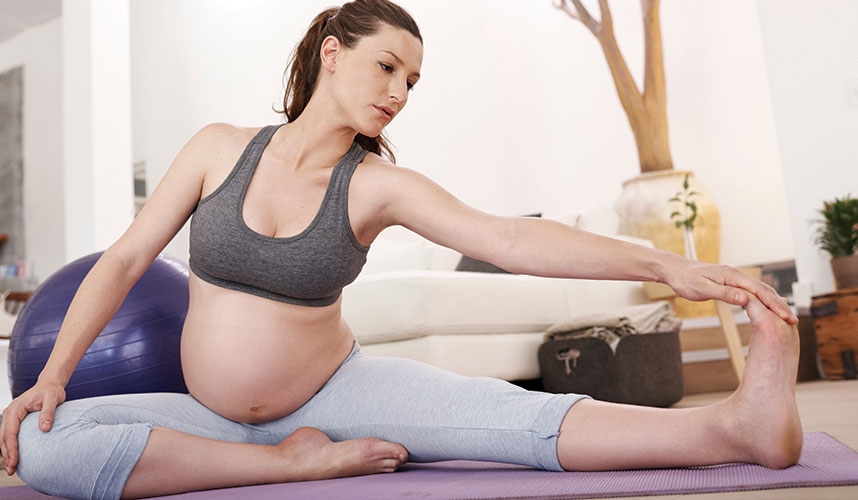Like many childless women in their late thirties, I had achieved the illusion of having control over my life – from what I ate, to my social activities and daily work. Family planning was no exception. I knew when I was going to have a baby, how I was going to have my baby, and before I’d even bought my first jar of prenatal vitamins, I had my pregnancy path all mapped out. I was going to be one of those wonder-pregnancy-women who only ate organic, went for daily swims and long walks on the beach, and who experienced regular surges of creative inspiration thanks to the life-giving hormones flowing through my veins. And then I fell pregnant. Almost instantly my plans fell to pieces. My energy levels plunged while my pregnancy hormones soared, and I was vomiting all the time.
Sophie Porche, a yoga practitioner says pregnancy can throw a woman into emotional turmoil. ‘Hormones kick in, endorphins change, and our mind struggles to deal with the ever-changing effects,’ she says. Rather than surrendering to hopelessness and panic, Porche recommends regular yoga practice to relieve stress and help restore a sense of control. ‘By consciously controlling your breath and synchronising movements, your mind becomes more attuned to your body, allowing you to recognise your physical limitations and capabilities,’ she says.
According to Porche, the benefits of yoga on the body are well documented. ‘These include improved balance, co-ordination, digestion, circulation, stamina, physical sensitivity and awareness.’ However, the biggest benefits might be those focused on the mind. Studies have shown that chronic stress in expectant mothers can lead to adverse outcomes. A University of California study found that pregnant women suffering from stress and anxiety were more likely to deliver preterm and low-birth-weight babies, while research by London’s Imperial College School of Medicine found that prenatal stress can lead to long-term behavioural problems in children.
I was in my fourteenth week when I attended my first yoga class run by Porche, a packet of dry crackers in hand. We began with the ‘savasana’ pose, which involves lying on your back with your eyes closed, and is aimed at achieving complete relaxation. But with work deadlines looming, I was so uptight you could have bounced a coin off my taut muscles. Then Porche began to speak, and her voice washed over me like a warm wave.
‘Picture your diaphragm. See it moving downwards as you fill your lungs with air. Hold … Focus on the inner you. Slowly breathe out. Tension floating away.’ Mine floated away so effectively I nearly fell asleep. ‘The method of pranayama—or wholesome breathing—greatly contributes to centring the body,’ says Porche. ‘But when it comes to the mind, it can prove a difficult task to simply shut off the mindless chatter. So let your mind race, but control the direction in which it is going.’ Porche believes this process of controlled thought and breathing can help our minds control our body and govern its state of being – especially in pregnancy. ‘Positive thoughts manifest physically in the body, and when sending these feel good vibes inward you are sharing them with your child.’
I’m now well into my third trimester, and the mind-calming effects of yoga have certainly proved beneficial. Even if I don’t always feel completely in control, I feel more confident along this bumpy pregnancy road.
Suvi is a busy full-time mum and part-time Surfers Paradise-based journalist combining freelance writing and photography with raising her daughter Amity Maree. Find her work at redbubble.com/people/suvimahonen.
TRY AT HOME
Porche says that pregnant women who are feeling the heat might benefit from practicing a form of yoga breathing called ‘Sitakari Breathing’, which literally means ‘teeth hissing’:
Find a comfortable place to sit, then breathe slowly in through your mouth, while curling your tongue upwards (this creates a slight hissing sound), before exhaling through your nose. As well as helping with fatigue and aiding digestion, this breathing technique is effective at bringing your body temperature down.







